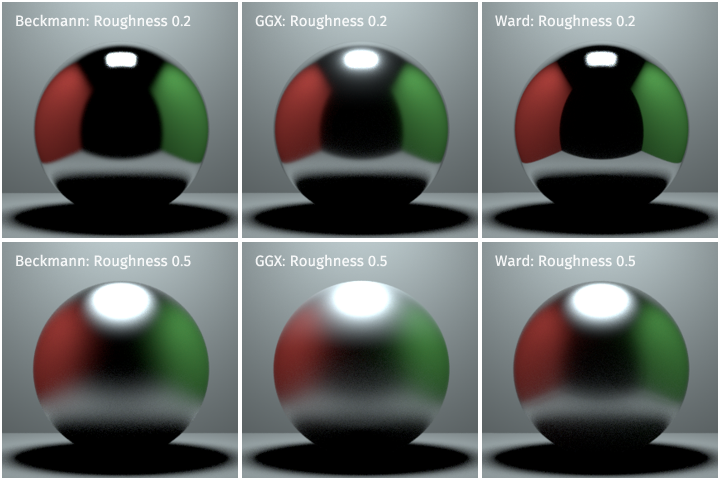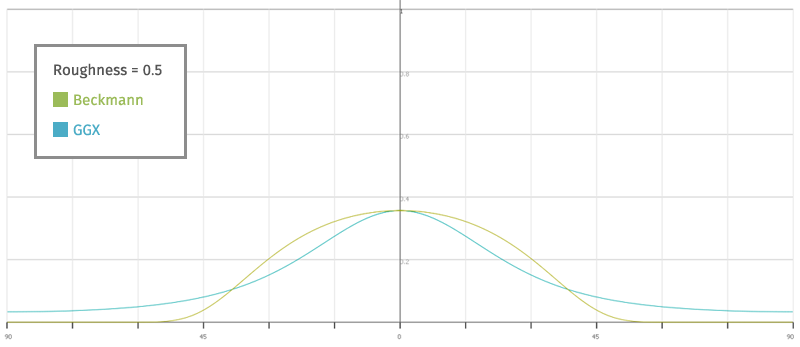
The microfacet BRDFs were originally implemented to support the default microfacet BRDF closures in OSL. They are also useful for importing materials from other applications because microfacet models (especially GGX) are widely adopted.
The original OctaneRender® BRDF does the BRDF sampling based on the light direction. In the additional BRDF models, the BRDF sampling is done based on the microfacet normal. These microfacet models try to mimic the surface's roughness, reconstructing the surface bumpiness at the micro geometry level and enabling the render core to achieve material properties like GlossyThe measure of how well light is reflected from a surface in the specular direction, the amount and way in which the light is spread around the specular direction, and the change in specular reflection as the specular angle changes. Used for shiny materials such as plastics or metals. Fresnel, which reduces the Fresnel effect at grazing angles for high roughness surfaces. These additional models also allow anisotropic roughness, which simulates anisotropic surface reflectance.
The most obvious difference between the three additional microfacet models is the specular highlight lobe, defined by the microfacet NDF (normal distribution function). Roughness controls the lobe size using this NDF, similar to how OctaneRender's existing BRDF works (but without NDF). The Ward BRDF behaves similar to the Beckmann BRDF model, but is considered to be cheaper to evaluate. While GGX is visually different compared to the two and is known for a longer specular tail.

With a Roughness value of 0.2, the difference between Ward and Beckmann is small, while GGX's lobe is quite different. GGX's lobe tends to have a longer tail near the end of the specular highlight compared to both Ward and Beckmann BRDF.
With a Roughness value of 0.5, the difference between Ward and Beckmann are still very similar, while GGX's specular highlight spreads out more due to the longer tail, appearing to be brighter in areas around the reflection of the direct light.
The following logarithmic graph shows GGX's and Beckmann's NDFs with a roughness of 0.5, with a varying angle of surface normal and microfacet normal. The GGX specular tail is longer than the Beckmann, as its NDF never goes to 0 in the hemisphere, while Beckmann's specular tail quickly goes to 0 after 45 degrees.
